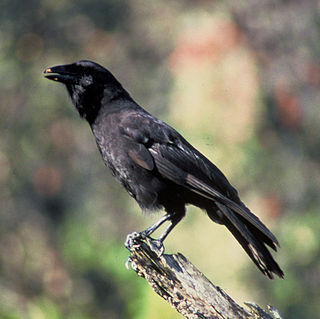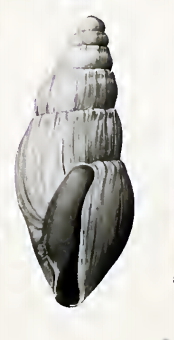
Herring are forage fish, mostly belonging to the family of Clupeidae.

The guenons are Old World monkeys of the genus Cercopithecus. Not all members of this genus have the word "guenon" in their common names; also, because of changes in scientific classification, some monkeys in other genera may have common names that include the word "guenon". Nonetheless, the use of the term guenon for monkeys of this genus is widely accepted.

A species that is extinct in the wild (EW) is one that has been categorized by the International Union for Conservation of Nature as only consisting of living members kept in captivity or as a naturalized population outside its historic range. Classification requires exhaustive surveys conducted within the species' known habitat with consideration given to seasonality, time of day, and life cycle. Once a species is classified as EW, the only way for it to be downgraded is through reintroduction.
This article is a list of biological species, subspecies, and evolutionary significant units that are known to have become extinct during the Holocene, the current geologic epoch, ordered by their known or approximate date of disappearance from oldest to most recent.
The Daghestan pine vole is a species of rodent in the family Cricetidae. It is found in Russia, Georgia, Armenia, and Azerbaijan.
Macroperipatus insularis is a species of velvet worm in the Peripatidae family. It is found in Jamaica, and Hispaniola. The original description of this species is based on a female specimen, 55 mm long, with 30 pairs of legs.
Mesoperipatus is a monospecific genus of velvet worm in the Peripatidae family, containing a single species Mesoperipatus tholloni. It is found in Gabon, making it the only known species of velvet worm in the tropics of Africa, and the only known species of peripatid velvet worm in Africa. Females of this species have 24 to 27 pairs of legs; males have 23 or 24. This species is viviparous, but too little is known of its embryology to describe its reproductive mode in any more detail; the presence of a placenta, for example, has not been confirmed.

Peripatoides suteri is a species of velvet worm in the Peripatopsidae family. This species is ovoviviparous, has 16 pairs of legs, and is endemic to New Zealand. These velvet worms range in size from 14 mm to 90 mm.
Speleoperipatus is a monospecific genus of velvet worm in the Peripatidae family, containing the single species Speleoperipatus spelaeus. This species is a pale greenish yellow, almost white, with 22 or 23 pairs of legs and no eyes. Specimens range from 27 mm to 34 mm in length. The minimum number of leg pairs found in this species (22) is also the minimum number found in the neotropical Peripatidae. This velvet worm is viviparous, with mothers supplying nourishment to their embryos through a placenta.

Leucopatus is a genus of velvet worm in the family Peripatopsidae, containing a single species, the blind velvet worm. It is found in northeast Tasmania, Australia, and is ovoviviparous.

Stygobromus is a genus of amphipod crustaceans that live in subterranean habitats. The majority of the listed species are endemic to North America, a smaller number of species are also known from Eurasia. Most of the North American species live in areas which were not covered by the Laurentide Ice Sheet, although a few species seem to have survived under the ice. A number of species are on the IUCN Red List as endangered species (EN) or vulnerable species (VU); one species, S. lucifugus, is extinct.

A vulnerable species is a species which has been categorized by the International Union for Conservation of Nature as being threatened with extinction unless the circumstances that are threatening its survival and reproduction improve.

Scrinium is a genus of sea snails, marine gastropod mollusks belonging to the family Mitromorphidae, in the superfamily Conoidea the cone snails and their allies.

Endangered species, as classified by the International Union for Conservation of Nature (IUCN), are species which have been categorized as very likely to become extinct in their known native ranges in the near future. On the IUCN Red List, endangered is the second-most severe conservation status for wild populations in the IUCN's schema after critically endangered. In 2012, the IUCN Red List featured 3,079 animal and 2,655 plant species as endangered worldwide. The figures for 1998 were 1,102 and 1,197 respectively.









